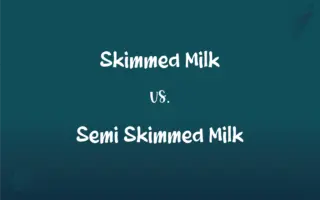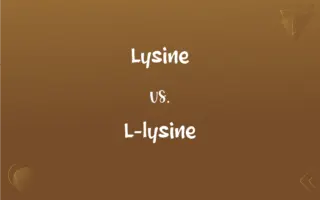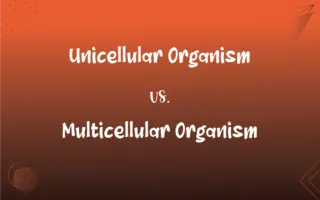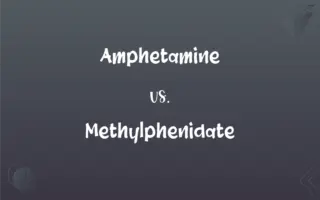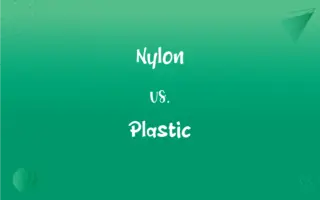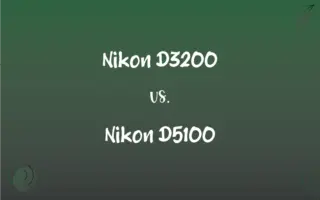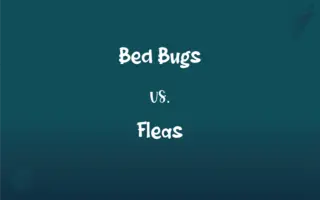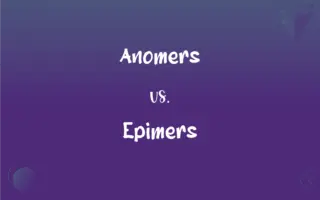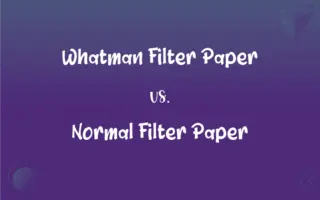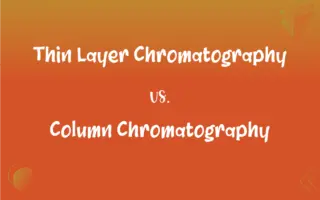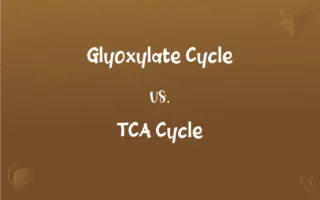Matte vs. Mat: What's the Difference?
Edited by Aimie Carlson || By Janet White || Updated on November 10, 2023
Matte refers to a non-glossy, dull finish or surface quality, while a mat is a piece of fabric material used as a floor covering or for wiping feet.

Key Differences
Matte and mat, while sounding similar, serve different purposes. Matte is an adjective describing a surface finish that is non-reflective and lacks gloss. In contrast, a mat is a noun referring to a piece of fabric or material placed on a floor or surface for various uses, such as cleaning or decoration.
The term "matte" is often used in photography, art, and cosmetics, signifying a dull, non-shiny finish. For instance, matte paint absorbs light, providing a flat appearance. On the other hand, a mat serves a functional role in homes and businesses, used as a protective or cleaning tool, like a doormat or a placemat.
In usage, matte can describe textures, paint, paper, or photographs that are free from shine or gloss. This quality is sought after for its aesthetic appeal in various creative fields. Conversely, a mat is commonly found in household settings, serving practical purposes such as preventing dirt from entering a home or providing a comfortable standing area.
Matte finishes are preferred in certain situations to avoid glare or to give a sophisticated, elegant appearance. Products like matte lipstick or matte photo prints exemplify this use. In contrast, mats can be made of various materials like cotton, rubber, or jute, each serving specific purposes like moisture absorption, slip resistance, or aesthetic appeal.
The aesthetic value of matte lies in its ability to present colors without the interference of light reflection, often used in design and art for its subtlety and depth. Mats, however, are valued for their functionality and versatility, available in various shapes, sizes, and materials to suit different environmental and usage needs.
ADVERTISEMENT
Comparison Chart
Definition
A non-glossy, dull finish or texture
A piece of fabric material for floor covering
Usage Context
Photography, art, cosmetics
Home, business (flooring, wiping feet)
Function
Aesthetic, reduces glare
Practical, protection, cleaning
Example Types
Matte paint, matte paper
Door mats, yoga mats
Material
Related to surface texture and appearance
Made of fabric, rubber, jute, etc.
ADVERTISEMENT
Matte and Mat Definitions
Matte
A surface quality that does not reflect light.
The artist chose a matte canvas for her painting.
Mat
A piece of material placed on a floor.
Please wipe your feet on the mat before entering.
Matte
A type of photo paper with a non-reflective surface.
She printed her photos on matte paper to reduce glare.
Mat
Used for activities like yoga or gymnastics.
She rolled out her yoga mat for the morning session.
Matte
Used in art to create a subtle, sophisticated look.
The matte effect on the mural added depth to the colors.
Mat
Used for absorbing moisture, like in bathrooms.
The bathroom mat absorbs water to prevent slipping.
Matte
Lacking in shine or gloss.
He preferred the matte finish on his car.
Mat
Used to protect surfaces from dirt or damage.
The kitchen mat keeps the floor clean while cooking.
Matte
A type of makeup without shine.
Matte lipstick is popular for its long-lasting color.
Mat
Often used as a decorative piece in homes.
The colorful mat at the entrance added a welcoming touch.
Matte
Variant of mat2.
Mat
A flat piece of coarse fabric or other material used for wiping one's shoes or feet, or in various other forms as a floor covering.
Matte
An opaque border or pattern placed between a source of light and a photosensitive surface to prevent exposure of specified portions of the surface.
Mat
A small flat piece of decorated material placed under a lamp, dish of food, or other object.
Mat
(Sports) A floor pad to protect athletes, as in wrestling or gymnastics.
FAQs
Can matte finishes be cleaned easily?
It depends on the material, but some matte surfaces can be more prone to showing marks.
Can a mat be used outdoors?
Yes, mats like doormats are often used outdoors.
Are all mats absorbent?
Not all, but many mats like bath mats are designed to be absorbent.
Does matte apply to digital screens?
Yes, matte screens are used to reduce glare on monitors and TVs.
Is a mat always rectangular?
No, mats can come in various shapes and sizes.
Do mats require special care?
Care depends on the material, but many mats can be easily cleaned or are machine washable.
Do matte surfaces show fingerprints?
Yes, matte surfaces can show fingerprints and smudges more than glossy surfaces.
Are matte finishes more expensive?
Sometimes, as they can require special materials or coatings.
Do mats come in different materials?
Yes, mats are made from a variety of materials like rubber, coir, cotton, etc.
Is matte always a color characteristic?
Yes, matte refers to a surface finish that is non-reflective and lacks gloss.
Can mats be decorative?
Yes, many mats are designed with decorative patterns and colors.
Are there different types of mats for different uses?
Yes, there are various types of mats like yoga mats, doormats, bath mats, etc., each designed for specific uses.
Can matte finishes be used on metal surfaces?
Yes, matte finishes can be applied to metal surfaces for a dull, non-reflective look.
Does matte finish affect color perception?
Matte finishes can make colors appear more muted compared to glossy finishes.
Are mats environmentally friendly?
Some mats are made from eco-friendly materials, but it varies by product.
Is it easy to replace or clean a mat?
Most mats are easy to replace or clean, depending on their material and size.
Is matte finish suitable for all types of photography?
Matte finish is preferred for certain types of photography to avoid glare, but it depends on the desired effect.
Can mats be a tripping hazard?
If not properly placed or if they curl up, mats can be a tripping hazard.
Is matte finish good for hiding imperfections?
Yes, matte finishes can be effective in hiding surface imperfections.
Can matte paint be used in any room?
Yes, but it's often used in rooms where low reflection is desired.
About Author
Written by
Janet WhiteJanet White has been an esteemed writer and blogger for Difference Wiki. Holding a Master's degree in Science and Medical Journalism from the prestigious Boston University, she has consistently demonstrated her expertise and passion for her field. When she's not immersed in her work, Janet relishes her time exercising, delving into a good book, and cherishing moments with friends and family.
Edited by
Aimie CarlsonAimie Carlson, holding a master's degree in English literature, is a fervent English language enthusiast. She lends her writing talents to Difference Wiki, a prominent website that specializes in comparisons, offering readers insightful analyses that both captivate and inform.

















